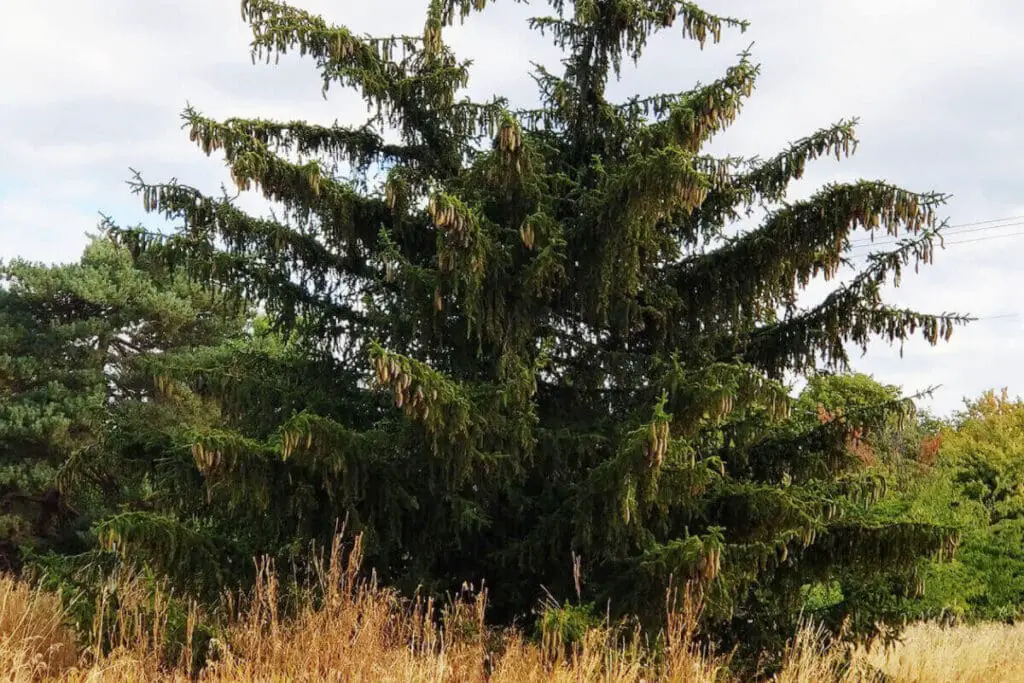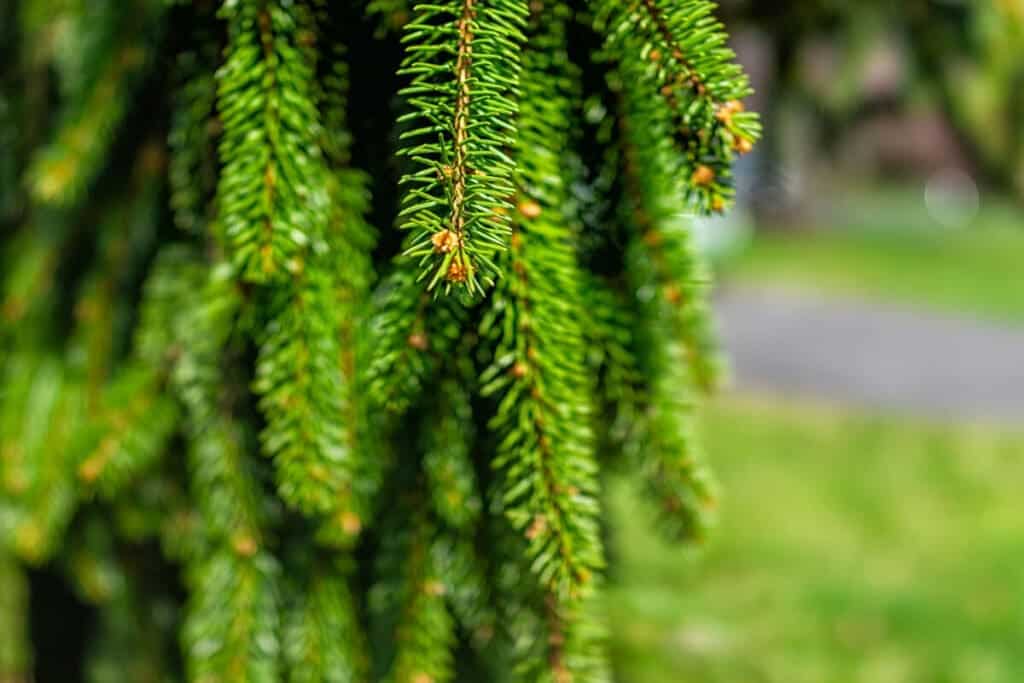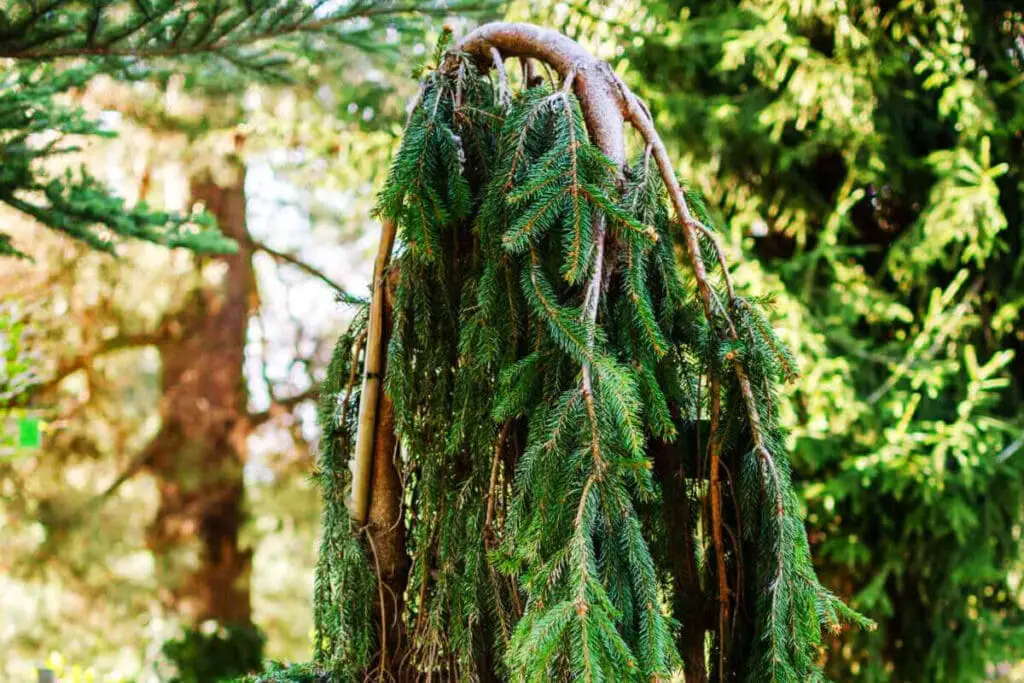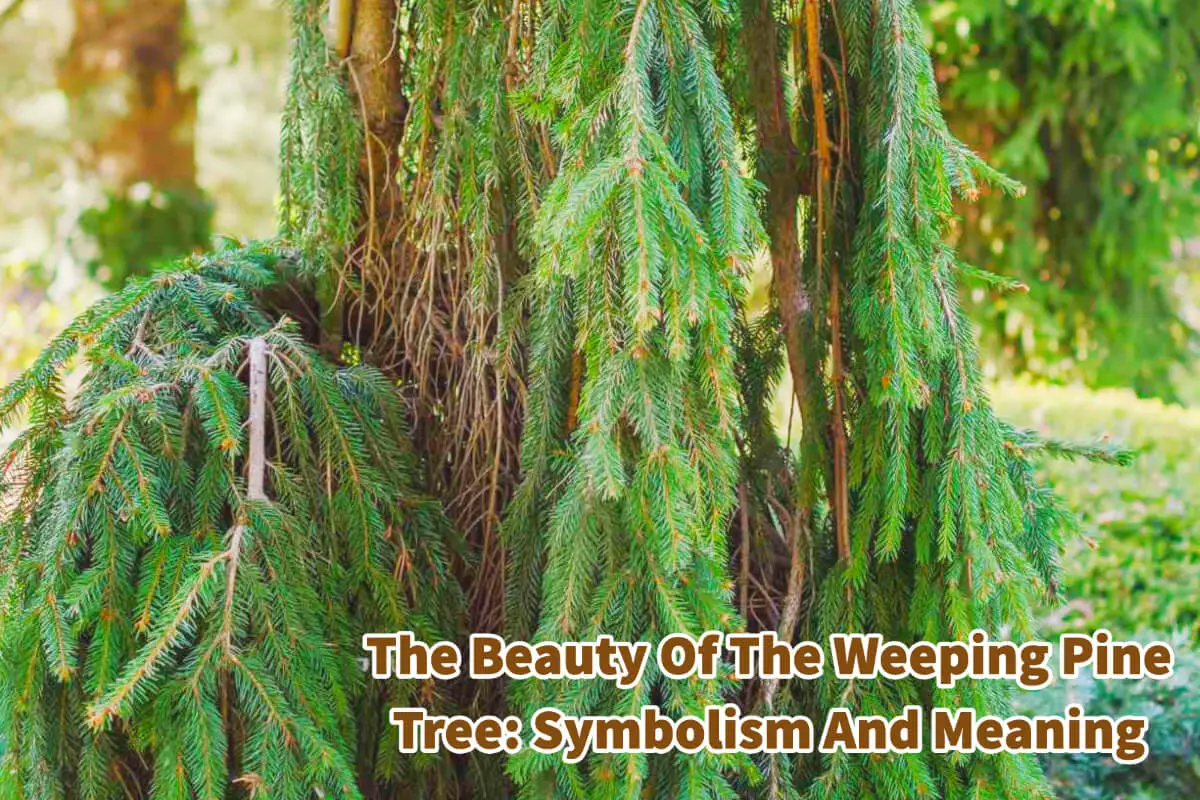Nature has long been a source of inspiration, captivating us with its profound symbolism and timeless beauty. Among the many treasures found in the natural world, the weeping pine tree stands as a remarkable symbol, evoking both admiration and curiosity.
The Weeping Pine Tree with its graceful branches cascading downwards, the weeping pine tree carries a unique symbolism that resonates across cultures and throughout history. Read on as we will delve into the rich symbolism and meaning of the weeping pine tree. From its association with resilience and strength in the face of adversity to its representation of longevity and spiritual growth, the weeping pine tree holds a special place in the tapestry of symbolism.
Table of Contents
- The Enigmatic Beauty Of The Weeping Pine Tree: Symbolism And Meaning
- The Symbolic Significance Of The Weeping Pine Tree
- Cultural Significance And Mythology Of Pine Tree
- Frequently Asked Questions
- Related Content
The Enigmatic Beauty Of The Weeping Pine Tree: Symbolism And Meaning

The Weeping pine tree is a remarkable and awe-inspiring creation and stands out as a beautiful and intriguing specimen. With its graceful drooping branches and melancholic aura, the weeping pine tree has captivated people’s imaginations for centuries.
We will delve into the world of the weeping pine tree, exploring its characteristics, symbolism, and profound meanings.
The Weeping Pine Tree: Nature’s Artistry
The weeping pine tree, scientifically known as Pinus strobus ‘Pendula,’ is a beautiful coniferous tree with distinctive cascading branches that gracefully sweep the ground.
Native to North America, Europe, and Asia, this tree species has gained recognition for its unique growth habit, characterized by its drooping branches that give it the appearance of a “weeping” tree. The long, slender needles and cone-shaped fruits further enhance their exquisite allure.
The weeping pine tree’s enchanting form and graceful presence make it popular among landscape designers and garden enthusiasts. Its cascading branches create a sense of movement and elegance, adding visual interest and drama to any setting.
Whether planted as a solitary specimen or in groupings, the weeping pine tree never fails to evoke a sense of wonder and serenity.
The Symbolic Significance Of The Weeping Pine Tree

Many parts of the weeping pine tree are filled with symbolism. We will explore some of the more significant symbols of the weeping pine tree.
Grief And Mourning
The weeping pine tree has long been associated with grief and mourning in various cultures. Its elegantly drooping branches have made it a common sight in Asian graveyards, particularly in China.
The tree’s presence in these solemn settings serves as a poignant reminder of the transience of life and the inevitability of death. The weeping pine tree’s mournful appearance and its association with finality make it a symbolic representation of loss and the expression of sorrow.
Resilience And Strength
While the weeping pine tree is often linked to grief, it symbolizes resilience and strength in adversity. Despite its sad appearance, the tree exhibits remarkable perseverance, with its roots deeply anchored into the ground.
Its ability to thrive and adapt in harsh environmental conditions is a powerful metaphor for human resilience and the capacity to overcome challenges. The weeping pine tree teaches us the importance of staying strong in difficult times and enduring hardships.
Meditation And Tranquility
The weeping pine tree’s serene and contemplative ambiance has also made it a symbol of meditation and tranquility. Its gracefully swaying branches and whispering leaves evoke a sense of calmness and introspection.
Many individuals seek solace in the presence of the weeping pine tree, finding it conducive to quiet reflection and inner peace. The tree’s tranquil aura reminds us to slow down, connect with nature, and find stillness in our busy lives.
Cultural Significance And Mythology Of Pine Tree

The Pine tree is filled with symbols and mythology from many different cultures. Here are some of the cultural significance of the pine tree.
Chinese Culture: The Pine And Immortality
In Chinese culture, the pine tree holds great significance. Revered for its evergreen nature and longevity, the pine tree symbolizes endurance, immortality, and wisdom. It is often associated with scholars and intellectuals, embodying their pursuit of knowledge and personal growth.
With its graceful appearance and mourning associations, the weeping pine adds emotional depth to these symbolic attributes. In Chinese mythology, the weeping pine tree is associated with “everlasting sorrow.”
Its drooping branches are seen as tears shed for lost loved ones, symbolizing a perpetual state of mourning and remembrance.
Japanese Culture: The Matsu Tree And Strength
Similarly, the pine tree, known as “Matsu,” holds great cultural and symbolic significance in Japanese culture. It represents strength, steadfastness, and longevity. The weeping pine, or “share matsu,” reflects these qualities while adding a touch of vulnerability and emotional resonance.
It is often featured in traditional Japanese gardens, providing a harmonious blend of strength and grace. In Japanese folklore, the pine tree is associated with protection against evil spirits and is considered a guardian tree.
With its sad beauty, the weeping pine represents resilience in the face of adversity and the ability to find strength during challenging times.
Western Culture: Elegance And Romanticism
In Western cultures, the weeping pine tree is admired for its elegance and romantic allure. Its graceful, cascading branches have inspired poets, artists, and writers, who have used it to symbolize beauty, melancholy, and longing.
The tree’s melancholic appearance has often been associated with unrequited love, lost dreams, and the bittersweet nature of human emotions. Its presence in literature and art evokes a sense of nostalgia and introspection, inviting individuals to reflect on the transient nature of life and the complexities of human emotions.
Horticultural Considerations And Care
For those interested in incorporating the weeping pine tree into their landscapes, it is essential to understand its horticultural requirements. The weeping pine tree thrives in well-drained soil and prefers full sun or partial shade. It is relatively low-maintenance and generally resistant to pests and diseases.
However, regular pruning may be necessary to maintain its graceful form and prevent branches from touching the ground.
When planting a weeping pine tree, it is essential to consider its mature size and provide sufficient space for its branches to cascade freely. A backdrop of contrasting foliage or flowers enhances this tree’s aesthetic impact. It can be an excellent focal point in a garden or a beautiful addition to a water feature, where its reflective branches can create a captivating scene.
The weeping pine tree is a captivating and multifaceted creation of nature. Its symbolic significance resonates deeply with our human experiences, reflecting grief and mourning, resilience and strength, meditation, and tranquility.
Across different cultures, the weeping pine tree has played a significant role, serving as a powerful emblem of emotions and aspirations. Whether in an Asian graveyard, a traditional Japanese garden, or a Western landscape, the weeping pine tree’s elegant and melancholic presence leaves a lasting impression on those who encounter it.
As we contemplate its symbolism and immerse ourselves in its beauty, we are reminded of the profound connections between nature, the human experience, and the timeless expressions of emotion and meaning.
If you are interested in seeing how Mondoro can be a valuable partner for you for wood furniture products – we would love to talk to you to see how we can help you.
Find out more about how Mondoro can help you create, develop, and manufacture excellent home decor and furniture products – don’t hesitate to contact me, Anita. Check out my email by clicking here or become a part of our community and join our newsletter by clicking here.
Mondoro gives out a FREE Lookbook to anyone interested. You can receive a copy of our latest Lookbook by clicking here.
Listen to our Podcast called Global Trade Gal. You can find it on all major podcast platforms. Try out listening to one of our podcasts by clicking here.
Subscribe to our Mondoro Company Limited YouTube Channel with great videos and information by clicking here.
Frequently Asked Questions
What is the symbolism behind the weeping pine tree?
The weeping pine tree symbolizes resilience and strength, reflecting its ability to gracefully bend and endure in the face of adversity. This symbolism has been cherished across various cultures and time periods.
How does the weeping pine tree represent longevity?
The cascading branches of the weeping pine tree are often associated with longevity, symbolizing the ability to withstand the test of time. This enduring quality makes it a powerful symbol of lasting strength and vitality.
What cultural significance does the weeping pine tree hold?
The weeping pine tree is rich in cultural significance, with various cultures attributing diverse meanings to its unique form. From representing eternal life to embodying the resilience of the human spirit, its symbolism transcends geographical boundaries.
How does the weeping pine tree contribute to the symbolism of nature?
Nature has always been a wellspring of symbolism, and the weeping pine tree adds a layer of meaning with its graceful and cascading branches. It serves as a testament to the intricate and profound connections between the natural world and human emotions.
Is there a spiritual aspect associated with the weeping pine tree?
Yes, the weeping pine tree often carries spiritual connotations. Its upward-reaching branches are seen as a symbol of spiritual growth, connecting the earthly realm with higher planes of existence. This spiritual aspect enhances its symbolic depth.
Are there any specific rituals or traditions involving the weeping pine tree?
In some cultures, the weeping pine tree is incorporated into rituals and traditions. It might be planted in certain locations or used as a decorative element during significant ceremonies, further emphasizing its symbolic importance.
How does the symbolism of the weeping pine tree vary globally?
While resilience and longevity are common themes, the specific cultural interpretations of the weeping pine tree can vary. In some cultures, it may represent rebirth or renewal, while in others, it could symbolize wisdom and enlightenment.
Can the weeping pine tree be found in art and literature?
Absolutely. The weeping pine tree’s captivating form has inspired artists and writers throughout history. Its symbolism is often woven into literature, paintings, and other forms of artistic expression, contributing to its enduring legacy.
Does the weeping pine tree have a significance in landscaping and gardening?
Yes, the weeping pine tree is often valued in landscaping for its aesthetic appeal and symbolic meaning. Its graceful drooping branches make it a popular choice in gardens, parks, and other outdoor spaces.
How can individuals incorporate the symbolism of the weeping pine tree into their lives?
People can embrace the symbolism of the weeping pine tree by planting it in their gardens or incorporating images of it into their living spaces. Doing so can serve as a daily reminder of resilience, strength, and the enduring beauty found in nature’s intricate designs.
Related Content
Difference Between Solid Sheesham Wood, And Teak Wood
Solid Sheesham Wood and Teak Wood are both very different kinds of woods. Even though they are both considered hardwoods, Sheesham wood is softer than teak. Sheesham wood is also considered less durable than teak wood. Many premier manufacturers consider teak wood the ”king of woods.”
You can discover more by reading Difference Between Solid Sheesham Wood, And Teak Wood by clicking here.
Is Teak a Coniferous, Evergreen, Or Deciduous Tree? 11 Teak Wood Facts
Teak is a deciduous, not evergreen or coniferous tree. Teak leaves do not fall off in the wintertime but in the dry season; in Asia, where teak trees are naturally grown, the dry season is not always the same as winter. As the teak leaves do fall off, the tree is considered to be a deciduous tree.
You can discover more by reading our blog Is Teak a Coniferous, Evergreen, Or Deciduous Tree? 11 Teak Wood Facts, by clicking here.
All About Teak Wood And Outdoor Teak Furniture Care
Teak wood is a hardwood native to many parts of Southeast Asia. Myanmar has over half of the world’s naturally grown. Today, many teak kinds of wood are plantation grown and managed with sustainability in mind. Teak wood has a lot of natural properties that make it a logical choice for outdoor furniture. But with any outdoor furniture, teak wood needs proper cleaning and care to retain its natural color.
You can discover more by reading our blog, All About Teak Wood And Outdoor Teak Furniture Care, by clicking here.


